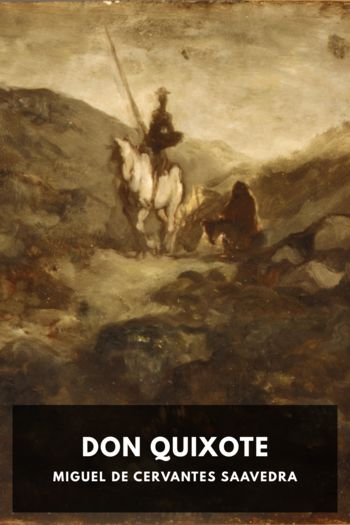Bashan and I, Thomas Mann [to read list .TXT] 📗

- Author: Thomas Mann
Book online «Bashan and I, Thomas Mann [to read list .TXT] 📗». Author Thomas Mann
In the gardens of our small but spaciously arranged colony of villas there are huge trees—ancient giants which tower above the roofs. They offer a marked contrast to the tender saplings but recently planted. There can be no mistaking the fact that these trees are the original growth—the aboriginal inhabitants of this region. They are the pride and beauty of this still youthful settlement. They have been carefully preserved and tended—as far as this was possible. At those points where they happened to come into conflict with the surveyor’s lines or with the fences dividing the various lots or tracts of land, that is to say, where some mossy, silvery, venerable trunk happened to be standing precisely on the lines of demarcation, you will find that the fence has made a little loop around the tree-trunk or that a gap has been left in the concrete of the garden wall. In these openings the Old Ones now tower, half privately, half publicly, their naked branches loaded with snow or bedizened with their small-leafed, late-sprouting foliage.
These trees are of the species of the ash—a tree which loves dampness as few others do. This quality at the same time offers a very significant commentary upon the essential peculiarity of our strip of country. It is not yet so very long ago that human ingenuity succeeded in turning it into something capable of cultivation and occupation—possibly a decade and a half ago—no longer. Before that it was a wilderness of swamps—a veritable brooding-place for gnats and mosquitoes—a waste in which willows, crippled poplars, and suchlike gnarled and twisted arboreal stuff mirrored itself in stagnant pools. This region, you must know, is subject to inundation. A few metres under the surface there is a strata of watertight soil. The ground has therefore always been swampy and water stood in every hollow. The draining of this fen was accomplished by lowering the surface of the river—I have no head for engineering, but some such expedient was made use of, with the result that the water which could not seep downward was induced to flow off laterally. Hence there are many subterranean brooks which pour themselves into the river at different spots. Solidity has thus been given to the soil, at least the greater part of it, for if you happen to know the district as Bashan and I know it, you would be able to discover in the thickets downstream many a reedy sinkage which reminds you of pristine conditions. These are places of silence and secrecy, the damp coolth of which defies the hottest summer day, spots in which one is glad to rest and draw breath for a space.
The region really possesses its own peculiar character and is to be distinguished at first glance from the banks of the usual mountain river with their pine woods and mossy meadows. It has succeeded in retaining this original peculiarity even since it has come into the possession of the real estate company. Even outside the gardens, the aboriginal and original vegetation maintains the upper hand over the imported and the transplanted. It is true that in the avenues and parks the horse-chestnut seems to thrive as well as the swift-growing maple. Even beeches and all kinds of decorative shrubbery—but all these, including the alien poplar which towers and ranges in rows of sterile masculinity—are not native to the soil. I said that the ash was an indigenous tree here—it is to be found everywhere, and it is of all ages—from giants hundreds of years old to the soft shoots which, like so many weeds, sprout in masses from the gravel. It is the ash and its companions, the silver poplar and the aspen, the birch and the willow, both as a tree and a bush, which give distinctive character to this landscape. But these are all trees with small leaves, and this smallness and trimness of the foliage in conjunction with the frequently gigantic masses of the trees themselves, at once attract attention in this neighbourhood. The elm, however, is an exception, and we find it spreading its spacious leaves, fretted as by a jigsaw and shiny and sticky on their upper surface, to the sun. And everywhere there are great masses of creeping plants which weave themselves around the younger trunks in the woods and in a bewildering way entangle their leaves with these.
The slender alders form themselves into small groves in the hollows. The lime is scarcely to be met with at all, the oak never appears nor does the fir. Yet there are firs upon the eastern declivities which form the frontiers of our territory, for here the soil changes and with it the vegetation. There they rear black against the heavens and peer, sentinel-like, upon us in our lower levels.
From this bluff to the river is not more than a hundred metres—I have paced the distance. It may be that the strip of riverbank widens, fan-like, a little farther downstream, but this divergence is in no way important. It is, however, remarkable what a diversity of landscape this limited region affords—even, though one explore only the playground which





Comments (0)